Chinese food vs Japanese food | 3 main differences explained
Every country in the world has its own cuisine, which is a true reflection of its values and culture.
Nevertheless, food is a universal language, understood by everyone, and people need it to survive.
Everyone has a different interpretation of what their preferred cuisine should look like though. However, this all depends on where we come from.
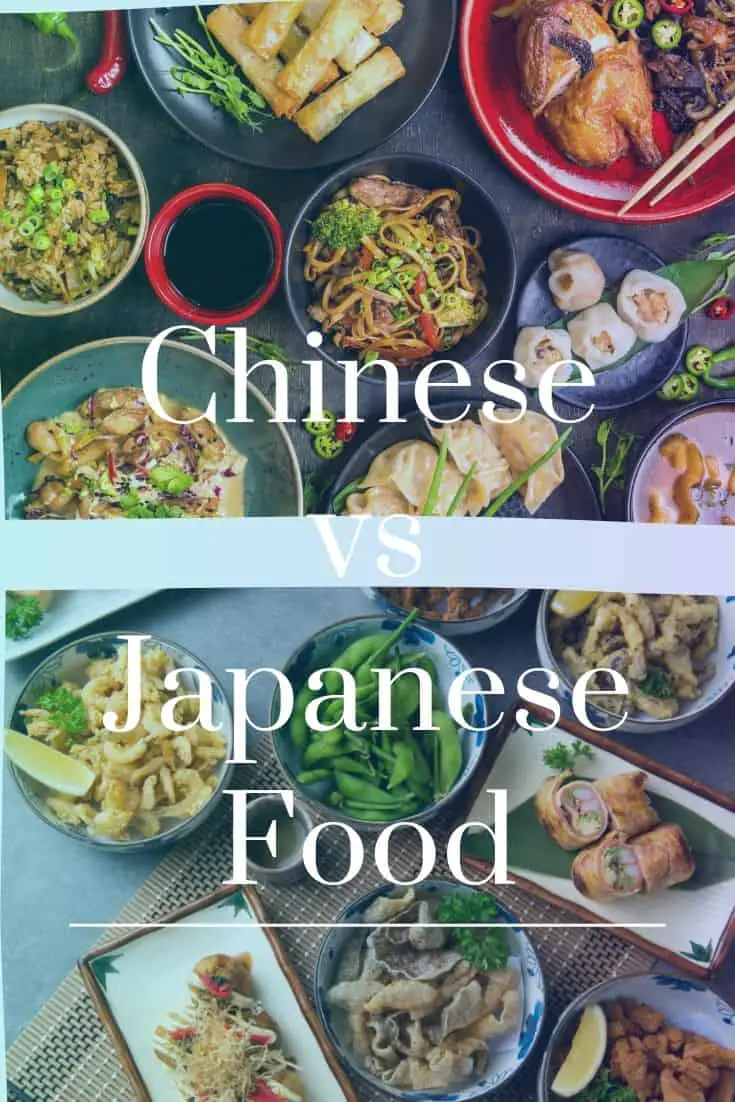
For example, European cuisine is very different from Asian cuisine. However, Asian cuisine also does vary, especially when it comes to Japanese cuisine and Chinese cuisine.
Many people mix up Chinese and Japanese food because there are many similarities between the 2. However, there are many notable differences in ingredients, cooking methods, and flavors.
In this post, I’ll look at the difference between Japanese food and Chinese food!

Check out our new cookbook
Bitemybun's family recipes with complete meal planner and recipe guide.
Try it out for free with Kindle Unlimited:
Read for freeIn this post we'll cover:
Chinese food
Also known as Chinese cuisine, Chinese food refers to the cooking style of meals in China, as well as its surrounding regions. Chinese cuisine has a rich and interesting historical background, which dates back to over 1,000 years ago, under various dynasties.
However, Chinese cuisine has changed over time, and the main reason for this is to accommodate the different preferences of the local people.
One of the most notable things when it comes to Chinese food is that dairy products are rarely used.
Today, we have around 8 recognized foods in Chinese cuisine, which include:
- Anhui
- Cantonese
- Sichuan
- Fujian
- Hunan
- Jiangsu
- Zhejiang
- Shandong
The main carbohydrates served in Chinese food are noodles and rice, together with vegetables in every Chinese meal. Chinese food also uses different types of sauces on their rice and seasonings.
The most popular types of Chinese food
Here’s a list of the most popular Chinese dishes that most people are familiar with. Many of these are staples in Western Chinese restaurants, not only in Asia. Who doesn’t know of tasty spring rolls?
Popular dishes include:
- Hotpot
- Noodles
- Rice dishes, especially fried rice
- Sichuan pork
- Braised pork balls with gravy
- Shrimp with vermicelli noodles
- Dumplings
- Chow mein
- Peking duck
- Steamed rolls
- Sweet and sour pork
- Kung Pao chicken
- Spring rolls
- Wontons
Japanese food
Japanese cuisine is greatly influenced by the traditional culture of the Japanese people. In this cuisine, rice is served as the main course, and at least 2 more side dishes are served to complement the rice.
One thing that makes Japanese cuisine unique is the use of fresh ingredients, as well as the healthy and light appearance of the food. For instance, miso soup, which is the most popular soup in Japan, is a simple and healthy stock made out of miso paste and seaweed.
Also, another notable thing about Japanese cuisine is the use of raw food, which is very common, and most foreigners visit Japan just to taste it. This is evident in the popularity of sushi, which has become a common delicacy in different countries far away from Japan.
Unlike in Western culture, different meals are served distinctly in Japanese cuisine, with each meal in its own small bowl or plate. The main reason behind this is that the Japanese don’t like the taste of various foods to mix with each other. This means you should always have a divider, especially when packing food dishes into a bento box.
Japanese people also love tea, particularly black or green tea.
They use matcha leaves in traditional tea ceremonies. Matcha is a very versatile ingredient used in a lot of Japanese snacks and rice bowls with green tea (this ochazuke!). I even have a matcha green tea ice cream recipe here on the site.
The most popular types of Japanese food
Most of these Japanese dishes are popular all over the world. You’ll find them in all kinds of Asian restaurants in the West. Some dishes, like sushi, are so popular that it’s hard to find a city without a sushi restaurant!
The popular dishes include:
- Sushi
- Sashimi
- Tempura
- Noodles of all kinds
- Yakisoba
- Udon
- Yakitori
- Okonomiyaki
- Miso soup
- Ramen
- Japanese curry
- Takoyaki
- Tofu
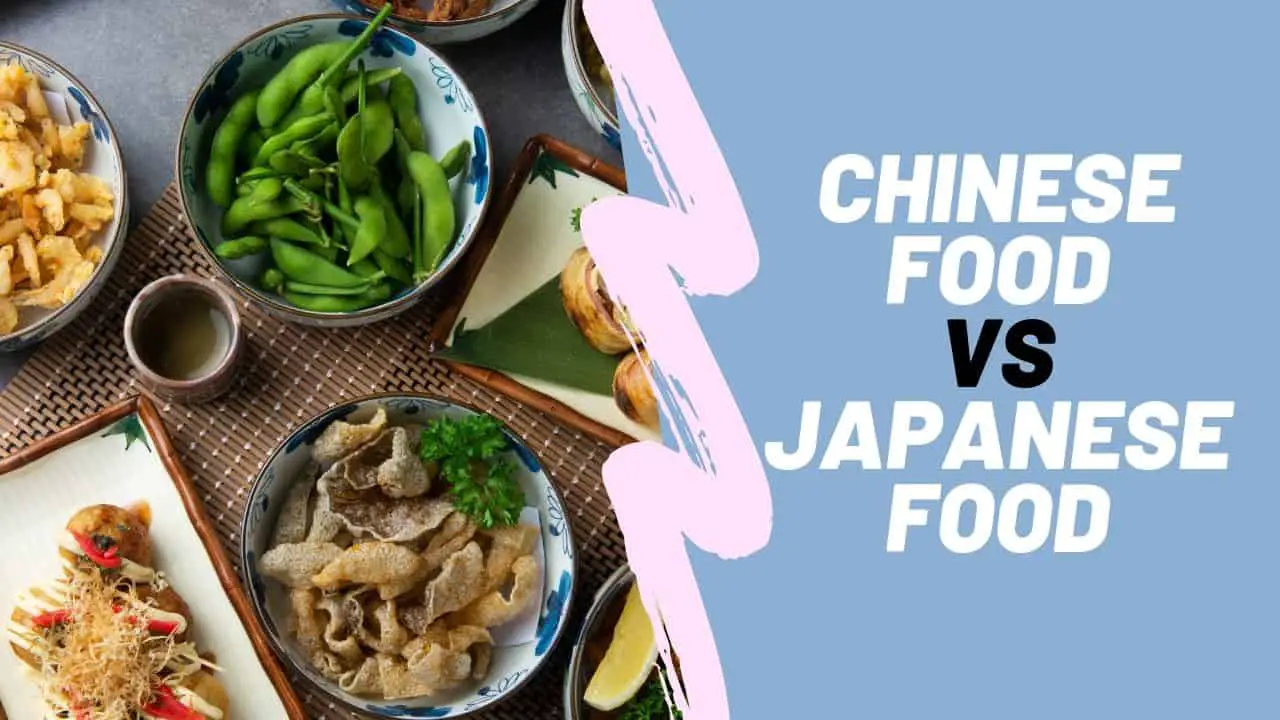
How is Chinese and Japanese food similar?
The most notable similarity between these 2 cuisine cultures is the use of fresh ingredients.
Whether we think of fresh seafood or fresh vegetables, the dishes almost always require fresh meats and produce.
Both cultures are also huge consumers of soy sauce and tofu. As well, both consume rice and noodle dishes.
What differentiates Japanese food from Chinese food?
It’s important to note that Asian cuisine is very unique when you compare it to cuisines from different parts of the world.
However, both the Japanese and Chinese cuisines have certain cooking and food preparation styles, which make them somehow similar, but also different.
In this post, I’ll highlight the few differences between Chinese food and Japanese food.
One of the first things a foodie can notice about these 2 types of cuisine is that Japanese food showcases more subtle flavors than Chinese cuisine.
The Japanese cuisine is much lighter on the stomach
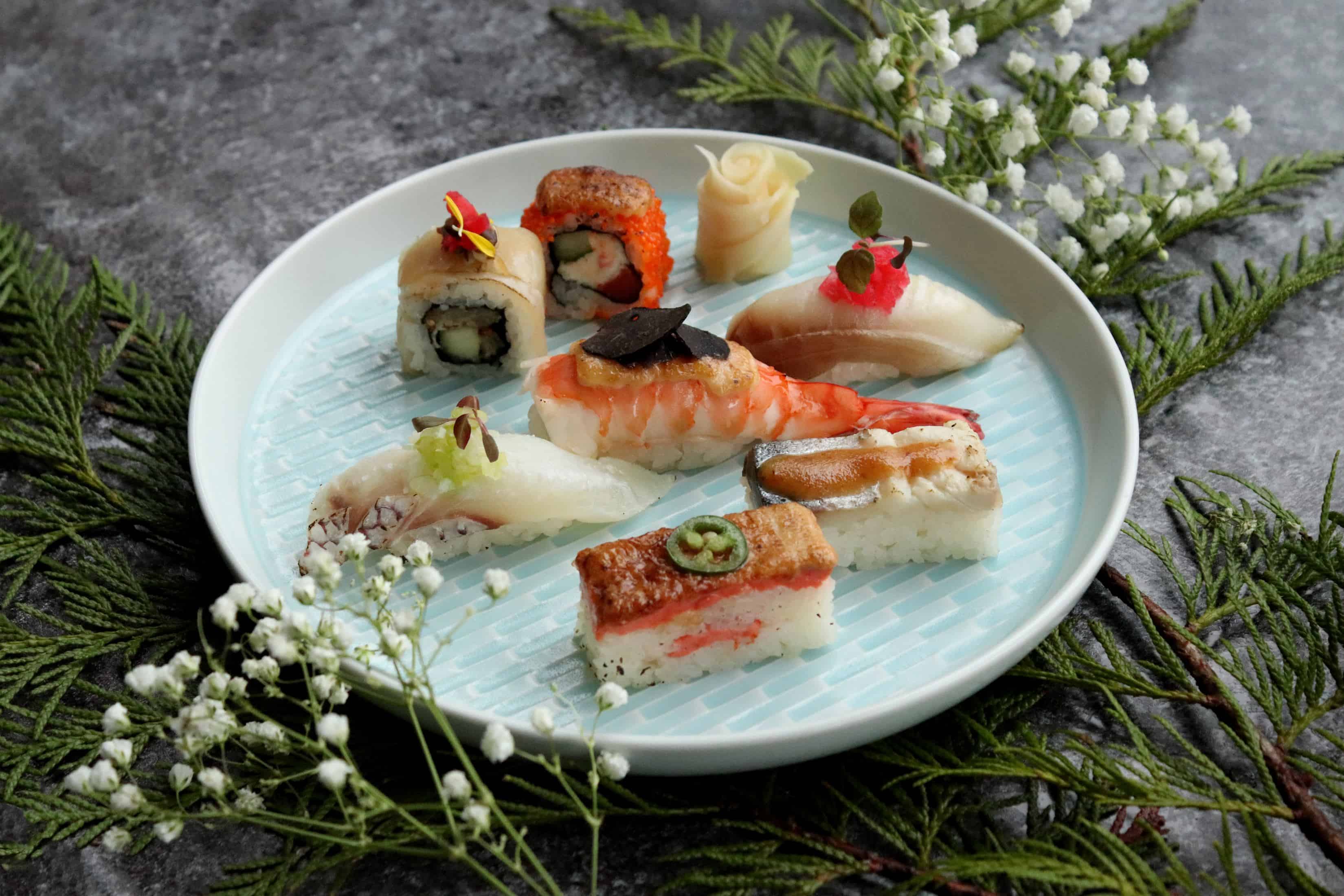
Japanese cuisine represents the ingredients, cooking, and way of eating in Japan. The food is much healthier, and also light on the stomach.
That’s the reason why Japanese food is considered to be healthier when compared to Chinese food.
Carbs and grease
One of the main things accounting for the difference between Japanese and Chinese food is the recipes used.
Chinese recipes need a lot of grease during food preparation, and this increases the calories in every meal. In addition, the main staples in Chinese food include noodles and rice, which also contribute to the increased consumption of carbohydrates.
Even though the preparation of Japanese food might consist of some rice in some meals, they’re in smaller quantities compared to Chinese food.
Pans
Another interesting thing about Japanese food (which also makes it better) is their traditional methods of food preparation.
Unlike the Chinese, the Japanese love to use flat pans called teppans, rather than woks. The use of flat pans allows the Japanese to cook different types of delicious recipes, without the need for a lot of grease and oil. Using a wok requires the use of oils such as sesame and vegetable oil.
One thing you need to note about the use of flat pans is that you can cook your food at very high temperatures, without damaging the nutritional value of the food you’re preparing.
Generally, the flat pans used by the Japanese can be compared to a grill, which allows the chef to cook raw veggies while retaining the juicy texture inside. That’s the reason why you’ll find Japanese food light and crispy, and without most of the unwanted oils.
Also, as highlighted earlier, the Japanese have one rule of thumb—eating certain foods raw and uncooked. This is very prevalent in Japan, especially when it comes to seafood.
Chinese cuisine requires a lot of preparation
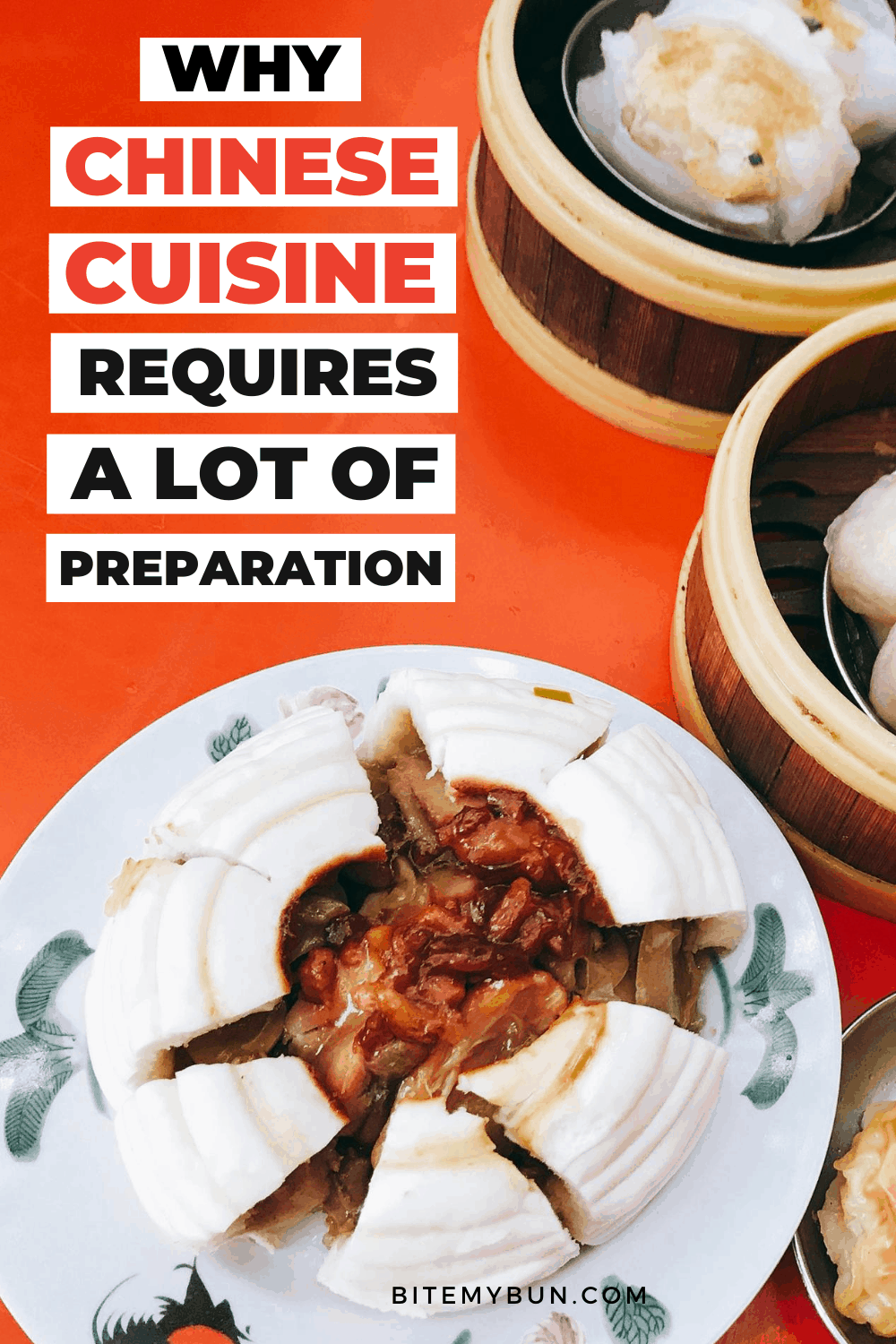
The Chinese, on the other hand, cook most of their food using a wok.
Mostly, you’ll find a Chinese cook using a wok to fry different types of food, and this involves constantly turning and mixing the ingredients found in the food.
The main idea behind using a wok to prepare food is to make sure that the food is cooked evenly.
There’s another interesting thing that you need to note about Chinese cuisine: it’s considered to be a big and important part of the Chinese culinary arts. That’s the reason why most Chinese dishes have names that are well-thought-out to be lucky.
For example, the moment you visit a Chinese restaurant, you’ll recognize some common dishes, like orange chicken, chicken chow mein, egg-flower soup, as well as other interesting dishes. You need to note that these names make the foods stand out.
Also, the Chinese love using lots of spices and herbs in their dishes to give the foods more flavors.
Restaurant-style Chinese food
It’s important that you don’t confuse take-out foods with traditional home-cooked Chinese foods, which are much healthier and more complex.
Fast food restaurants or Western-style Chinese restaurants offer quick recipes that are fried and loaded with unhealthy ingredients and additives.
One of the most problematic additives is a flavor enhancer called MSG (monosodium glutamate). It makes you crave this type of food and it’s addictive like sugar.
MSG is common in dishes like sweet and sour pork. It’s bad for your heart and waistline but the FDA considers it a safe additive.
Asian teas
Both the Japanese and Chinese cultures have tea touted as a staple in their cuisine too. However, it’s important to note that the teas consumed in Japanese cuisine and Chinese cuisine do vary.
For instance, the Chinese love to drink black tea while the Japanese love to drink green tea to complement their food.
However, both cuisines consume tea alongside the meal or afterward to assist digestion.
Meat and seafood
Another interesting and common difference between Chinese food and Japanese food is the entrees consumed. For example, the Japanese love beef, chicken, and fish, while the Chinese love pork, chicken, beef, and fish.
What you’ll notice is that most Japanese foods don’t use pork meat. They substitute it with an abundance of fresh seafood, which makes the dishes healthier.
When it comes to meat, Japanese cuisine has a lot more raw seafood dishes than Chinese food. Think of foods such as sushi, uni, and sashimi.
Most often, these contain many raw ingredients, especially seafood. For example, uni is raw sea urchin.
Seasoning and flavors
The Chinese love a good spicy dish. In general, they use more spices and herbs in their dishes so the food is more flavorful.
For example, you’ll find a lot of recipes that call for garlic. Not so in Japan; garlic is rarely the main seasoning ingredient in Japanese dishes.
In contrast, the Japanese prefer minimally seasoned food. They have a unique flavor profile called umami, which translates to savory.
You don’t find umami in Chinese dishes. Umami is a light type of salty or savory flavor that isn’t too overpowering to your taste buds.
Let’s examine some of the most common spices, herbs, and seasonings used in both cultures.
Common Chinese spices, herbs, and seasonings
- Garlic
- Spicy peppercorns
- Hot mustard
- Five-spice powder
- Spring onion
- Soy sauce
- Star anise
- Cumin
- Fennel
- Bay leaves
- Oyster sauce
- Rice wine
- Spicy bean paste
Common Japanese Spices, herbs, and seasonings
- Bonito flakes
- Soy sauce
- Miso
- Seaweed
- Dashi
- Shichimi
- Sesame
- Black pepper
- Ginger
- Wasabi
- Turmeric
- Cloves
- Cinnamon
What you’ll notice is that the Japanese prefer seafood flavors, while the Chinese like spicy flavors more.
The differences in a nutshell
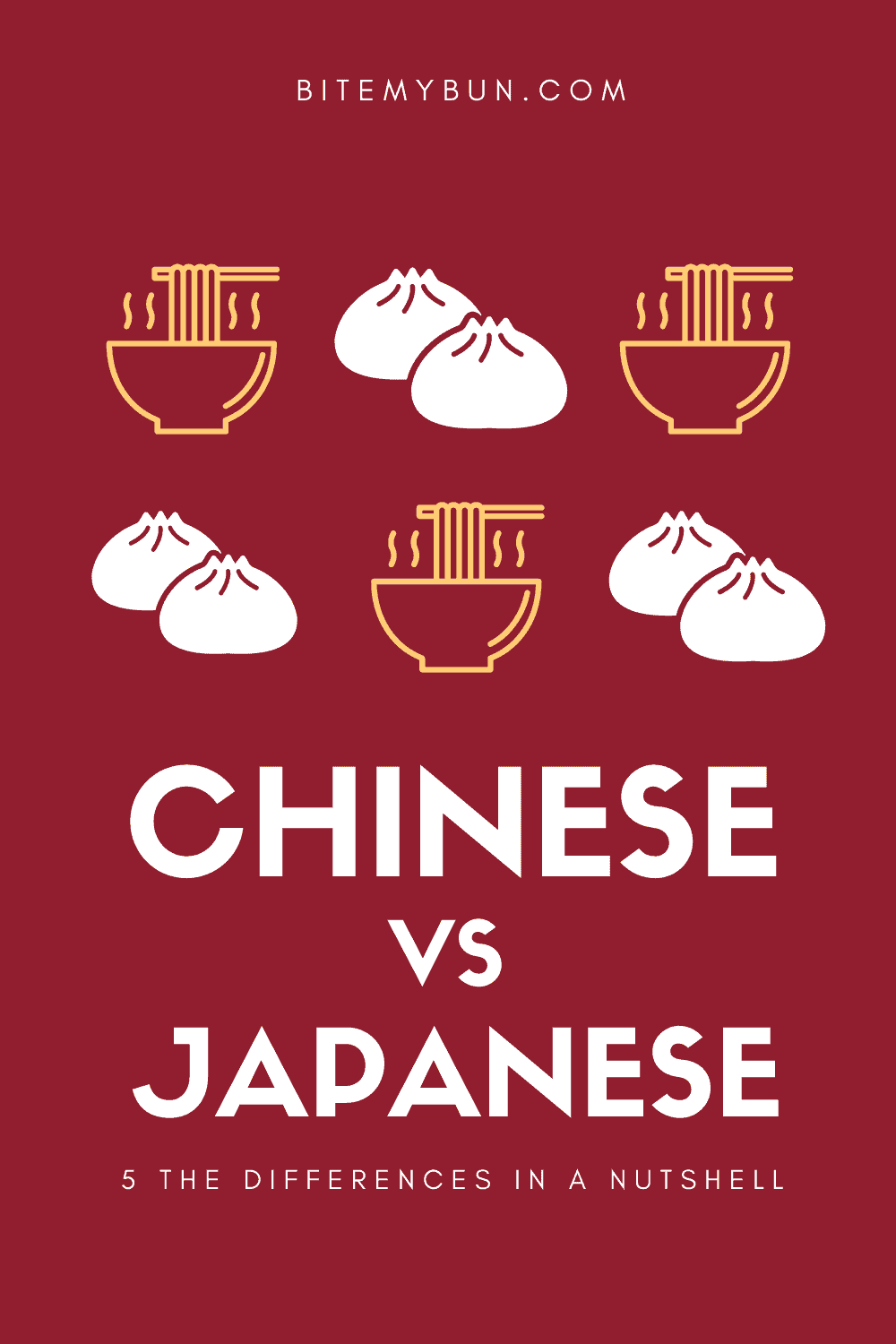
We can break down these differences into 3 points:
1. Health
The first difference between Japanese and Chinese food is how healthy the dishes are. As we saw earlier, Japanese foods are more nutritious and lighter compared to Chinese food.
Mostly, Japanese food involves the use of fresh ingredients and doesn’t have heavy seasonings. Chinese foods, on the other hand, are oilier, mostly because of the frying methods used.
The Japanese love grilling, or even serving food when it’s in a natural state. This makes Japanese food fresher and healthier for consumption.
A typical Chinese stir-fry is high in calories and sodium. It isn’t the ingredients that are unhealthy, but the oils and grease.
For example, consider that stir-fried vegetables have up to 2,200 mg of sodium, which is bad for heart health.
Many Japanese recipes call for steamed vegetables instead, which are low in calories.
2. Ingredients
The ingredients used in these 2 cuisines do vary significantly. Chinese cuisine involves the use of more meat compared to Japanese cuisine.
Traditionally, Japanese cuisine relies on seafood for protein rather than meat. However, meat is becoming popular in the country, especially after its modernization.
China, on the other hand, relies on meat in a variety of its cuisines.
Research has revealed that there has been an increase in the demand for meat in China for the last 30 years. This demand has increased almost 4 times!
3. Cooking techniques
Lastly, the cooking techniques used in these 2 cuisines also vary greatly. The Chinese use a lot of seasonings in their cuisine to make their food stand out.
Don’t let the mixture of ingredients take you by surprise. There are combinations that you don’t see mixed together in other meals!
Therefore, if you see a dish consisting of meat, fish, mushroom, as well as different vegetables, and the dish has lots of seasoning, then it’s probably a Chinese dish.
Also, Chinese cuisine loves using exotic meat, but Japanese cuisine doesn’t.
The Japanese mix things as well, but you’ll see it used in numerous side dishes instead of mixed together on one plate.
They love keeping the natural taste of fresh fish and also some meats. They like them grilled on a flat surface teppan grill or on grates like on a hibachi grill with some nice sauces.
Frying is a big part of cooking in both of these cultures. Japanese food is often deep-fried, whereas Chinese food is pan-fried in a wok.
Hibachi style of cooking: is it Chinese or Japanese?
The term “hibachi” probably sounds familiar; that’s because hibachi cooking is extremely popular. “Hibachi” refers to a Japanese grilling technique that’s evolved throughout the years.
It involves cooking on a large cast-iron or sheet metal flat pan. Usually, rice, meats, and vegetables are cooked on this hot flat pan.
Teriyaki is a popular food cooked this way. Cooking in the hibachi style actually enhances the flavors of the food, which makes them tastier.
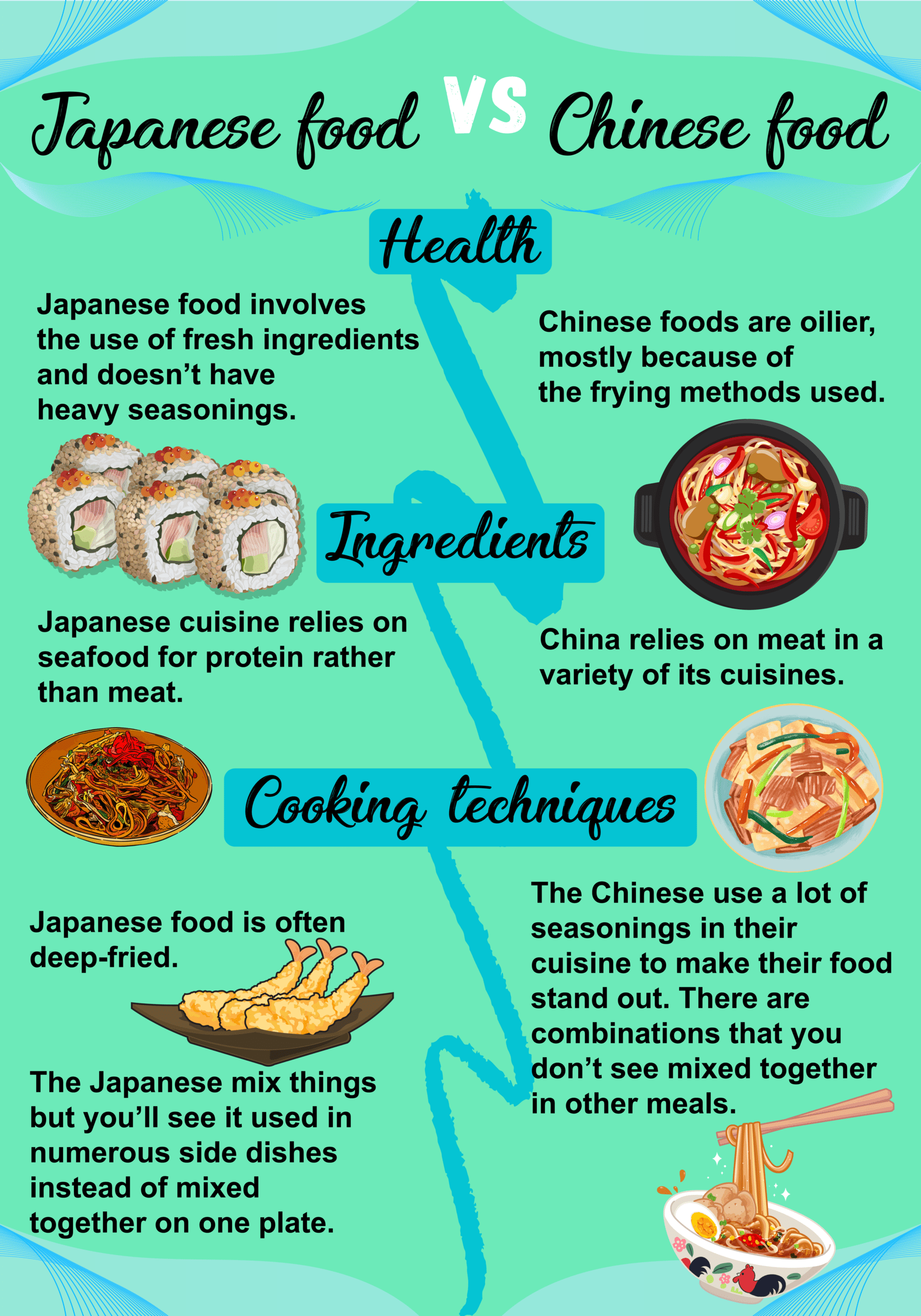
Enjoy both Chinese and Japanese food
Although most people love eating Asian food, it’s absolutely important to understand the difference between these 2 cuisines. You should be able to make a distinction when comparing Chinese food and Japanese food.
However, you’ll notice that the greatest difference is in the taste. As well, these cultures use different ingredients in their foods.
Also read: is Benihana authentic Japanese food?
Check out our new cookbook
Bitemybun's family recipes with complete meal planner and recipe guide.
Try it out for free with Kindle Unlimited:
Read for freeJoost Nusselder, the founder of Bite My Bun is a content marketer, dad and loves trying out new food with Japanese food at the heart of his passion, and together with his team he's been creating in-depth blog articles since 2016 to help loyal readers with recipes and cooking tips.
